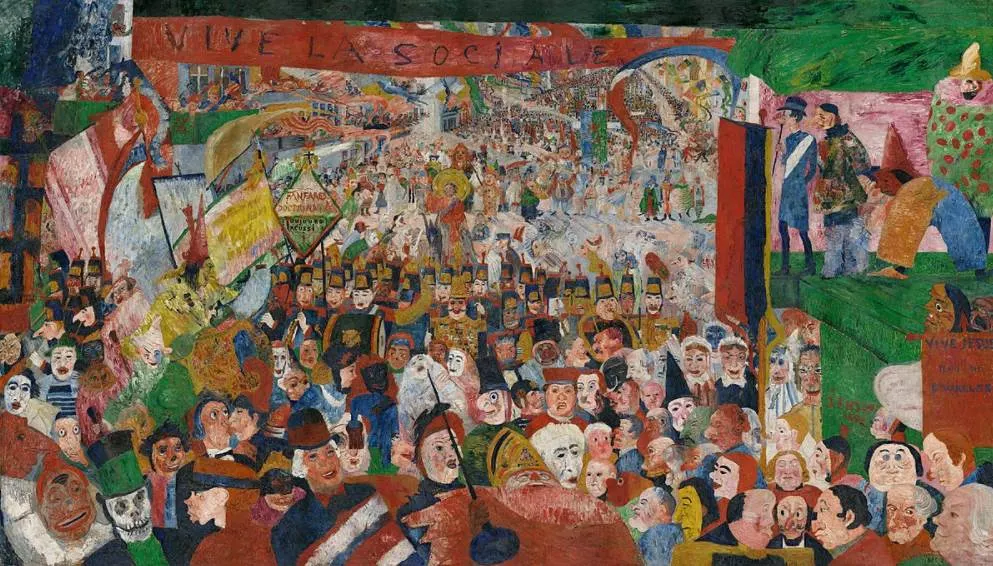The J. Paul Getty Museum is often just referred to as “The Getty” and is one of the most famous art museums on the west coast of the United States. It’s housed in 2 different locations in Los Angeles known as the “Getty Villa” and the “Getty Center.”
The Getty Villa is located in the Pacific Palisades in the western part of LA. It was the original location of the museum which was founded by industrialist Jean Paul Getty (1892-1976) and opened its doors in 1974, 2 years before the man passed away.
It still houses an extensive collection of art from Ancient Greece, Rome, and Etruria, but the most famous paintings at the Getty Museum were relocated to the newly built $1.3 Getty Center in 1997. When you inherit over $1.2 billion, you can spend a dime to upgrade your facility.
The Getty Center sits on a hill in the Brentwood area of LA and doesn’t just hold an incredible collection of fine art. It’s also an architectural highlight just west of the city center.
Let’s take a closer look at some of the most famous paintings at the Getty Museum so you have an idea why the museum is visited by over 2 million people every year.
1. Portrait of Alfonso d’Avalos with a Page – Titian
- Date Created: 1533
- Dimensions: 110 × 80 centimeters (43.3 × 31.4 inches)
The Portrait of Alfonso d’Avalos with a Page depicts Alfonso d’Avalos (1502-1546) an Italian general who was in the service of Charles V, Holy Roman Emperor. The painting was produced in the Italian city of Bologna and moved to Poland on an unknown date.
It’s one of 3 Paintings of Titian, a man who was named Tiziano Vecelli (1490-1576), owned by the Getty. It was supposed to be in the collection of the Louvre but this museum somehow didn’t buy it, allowing the museum in LA to purchase it for $70 million in the early 21st century. It’s on our list of most valuable paintings in museums today.
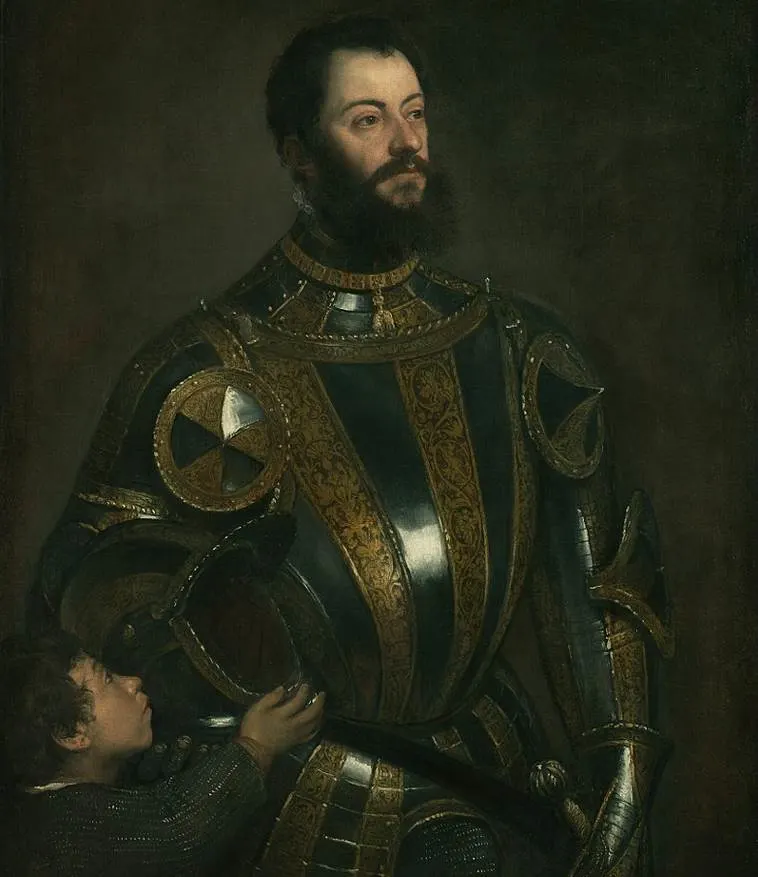
2. The Entombment – Peter Paul Rubens
- Date Created: 1612
- Dimensions: 131.1 × 130.2 centimeters (51.62 × 51.25 inches)
The Entombment is a painting by Peter Paul Rubens (1577-1640), the great Flemish master and leading artist of the Baroque era. It was painted just a few years after he returned from Italy and shortly after he married his first wife.
It depicts the moment shortly after Jesus Christ had died on the cross and was about to be entombed. We can see the influence of “The Entombment of Christ” by Caravaggio, a painting by the Italian artist that has a very similar composition.
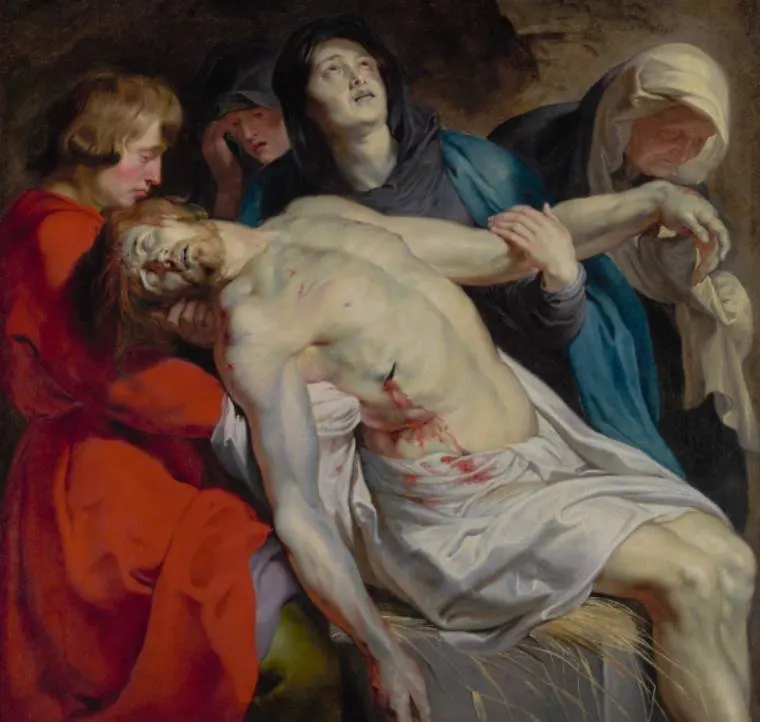
3. The Abduction of Europa – Rembrandt van Rijn
- Date Created: 1632
- Dimensions: 64.6 × 78.7 centimeters (25.43 × 31 inches)

The Abduction of Europa is a very rare work of art in the oeuvre of Rembrandt (1606-1669), the renowned Dutch artist who lived during the Dutch Golden Age and who rarely produced paintings with a mythological subject.
Rembrandt van Rijn painted this work while he was still in his twenties. It depicts the moment that the goddess Europa was taken to the island of Crete by Zeus who was disguised as a bull. This subject was derived from Ovid’s Metamorphosis, the Roman poet who lived during the reign of Augustus.
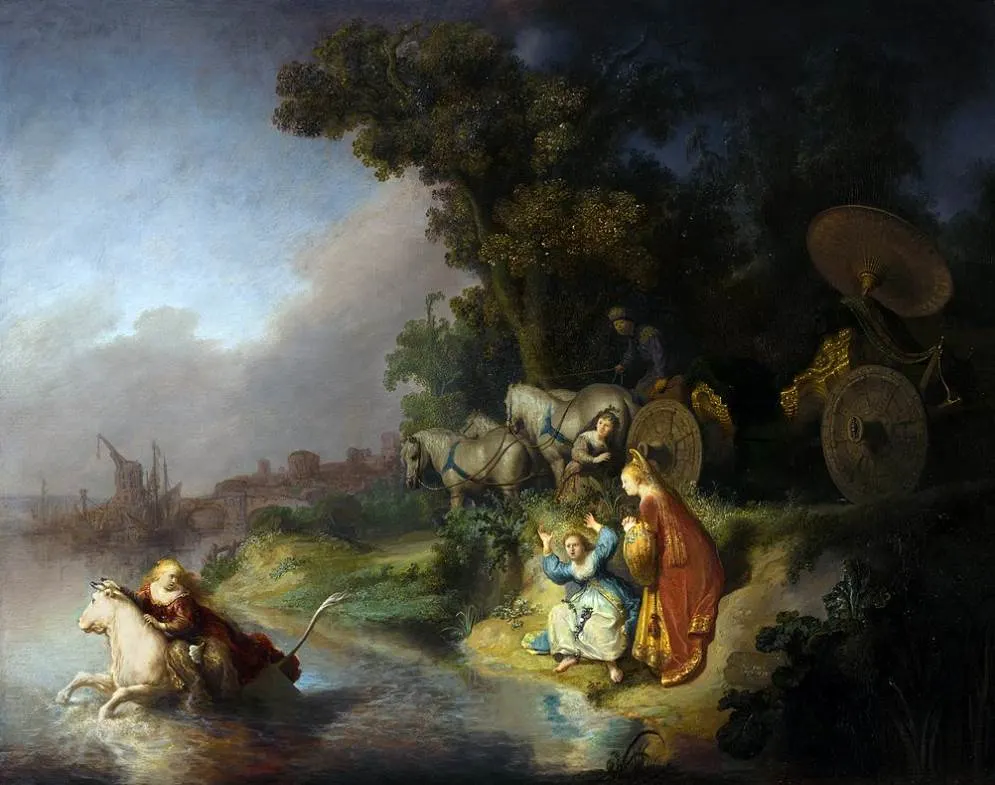
4. The Sisters Zénaïde and Charlotte Bonaparte – Jacques-Louis David
- Date Created: 1821
- Dimensions: 129.5 × 100.6 centimeters (51 × 39.62 inches)
The Portrait of the Sisters Zénaïde and Charlotte Bonaparte depicts the nieces of the fallen French Emperor Napoleon Bonaparte. We can see the moment that they read a letter from their father Joseph who was exiled to the United States while they were living in Brussels.
Jaques-Louis David (1748-1825) was the most famous Neoclassical artist of his time and closely followed Napoleon after the French Revolution. This painting was produced after the Fall of his idol, a time when he was also exiled to Brussels where both sisters lived. It was one of the final paintings by David.
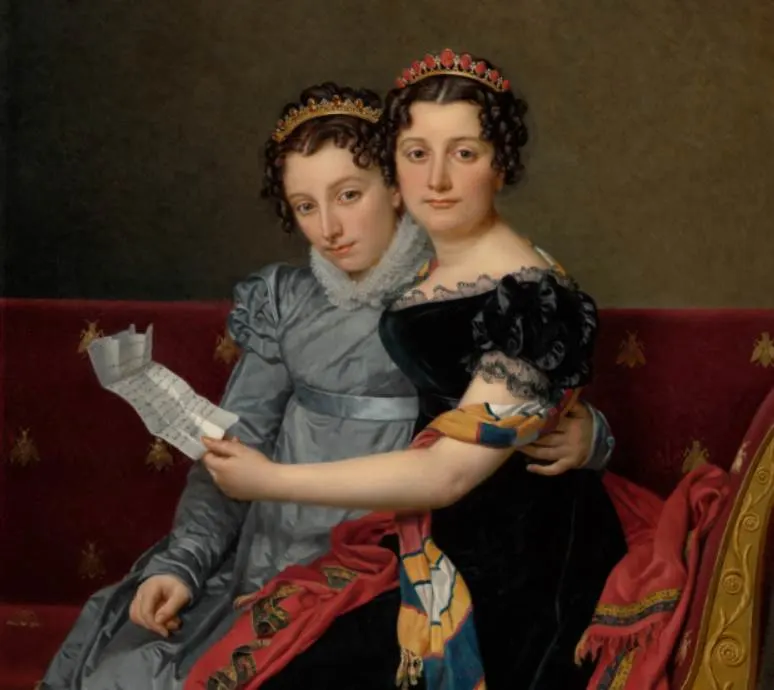
5. Bullfight (Suerte de Varas) – Francisco Goya
- Date Created: 1824
- Dimensions: 49.8 × 70.8 centimeters (19.62 × 27.87 inches)
Bullfight depicts the moment shortly before the Matador makes his final attack during one of the most popular forms of entertainment in Spanish history. It’s not surprising that it was also the favorite form of entertainment of famous Spanish master and leading Romantic artist Francisco Goya (1746-1828).
Some art historians believe that the painting was painted to serve as a metaphor for the tension in Spanish society in the early 19th century. The Getty saw its value because the museum acquired the painting for $7.9 million in 1992, a record for Goya’s paintings at the time.
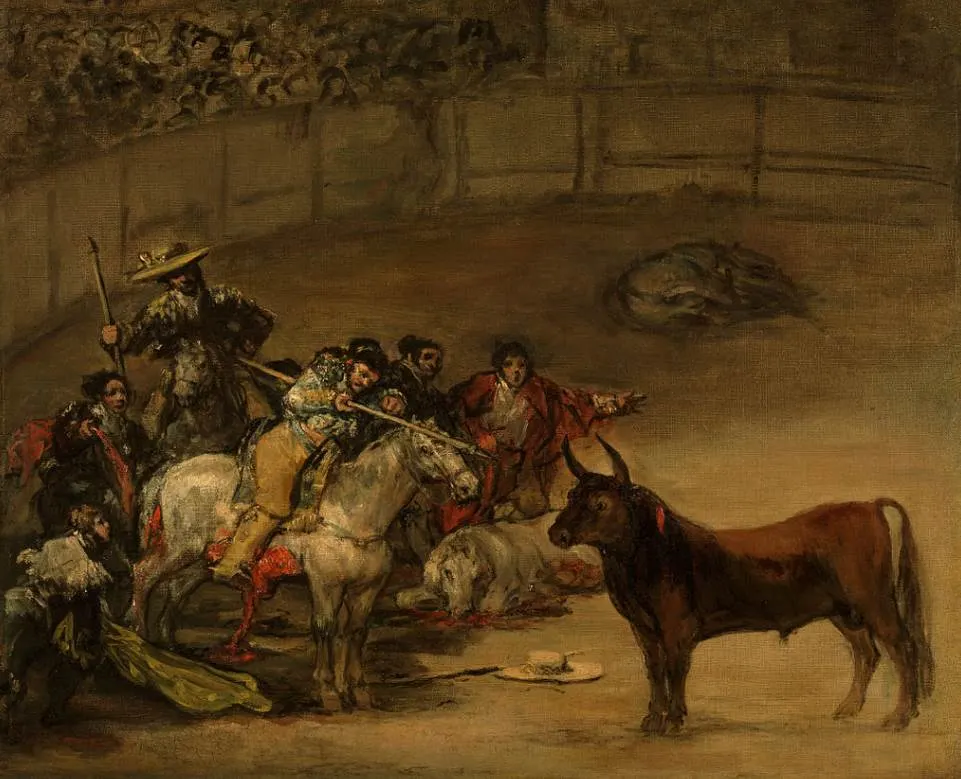
6. Modern Rome – Campo Vaccino – J.M.W. Turner
- Date Created: 1839
- Dimensions: 90.2 × 122 centimeters (35.5 × 48 inches)
Modern Rome – Campo Vaccino is one of the most remarkable J.M.W. Turner paintings, the eccentric, yet famous English artist of the Romantic era. It’s the final painting of Rome by Joseph Mallord William Turner (1775-1851) and depicts the Roman Forum full of grazing cattle, a manner in which it appeared for many centuries.
Campo Vaccino is a reference to this notion as it translates to “Cow Square.” This is another painting at the Getty Museum that was acquired for a lot of money. It was sold to the Getty in 2010 for £29.7 million, just 5 minutes after the auction went live.

7. La Promenade – Pierre-Auguste Renoir
- Date Created: 1870
- Dimensions: 81.3 × 65 centimeters (32 × 26 inches)
La Promenade was painted by one of the pioneering Impressionist artists of the 19th century, Pierre-Auguste Renoir (1841-1919). It depicts a young couple as they are going for a walk on a path inside a wooded area. A “Promenade” translates to a “Walk.”
Despite being one of the early Impressionist paintings, it was partially influenced by Rococo artists of the 18th century such as the paintings of Fragonard and Watteau. This was during the brief Rococo revival during the Second Empire of France (1852-1870).

8. Spring – Édouard Manet
- Date Created: 1881
- Dimensions: 74 × 51.5 centimeters (29.1 × 20.3 inches)
Spring was one of the final successful paintings by Impressionist artist Édouard Manet (1832-1883), a man whose paintings were pivotal in the development of the art movement. It was exhibited at the Paris Salon in 1882, the year before the artist passed away.
This painting was intended to become part of a series of works depicting the 4 seasons. He never managed to complete this series because he died shortly after he completed the second painting called “Autumn.” The Getty paid over $65 million for this work of art in 2014.

9. Irises – Vincent van Gogh
- Date Created: 1889
- Dimensions: 71 × 93 centimeters (28 × 36.62 inches)
Irises is a painting by Vincent van Gogh (1853-1890) that he completed shortly after he arrived at the mental hospital in Saint-Rémy-de-Provence, France. Van Gogh completed it in May 1889, just over a year before he took his own life.
He painted a series of works during his stay in the mental hospital, including one of his most famous works called “The Starry Night.” While this painting shows hints of the Post-Impressionist artist’s deteriorating state of mind, Irises is a remarkable work of art because it emphasizes the notion that the artist felt quite comfortable in his ne environment.

10. Christ’s Entry Into Brussels in 1889
- Date Created: 1888
- Dimensions: 253 × 431 centimeters (99.5 × 169.5 inches)
Christ’s Entry Into Brussels in 1889 is a parody of Christ’s triumphant entry into Jerusalem, an event that presumably took place on Palm Sunday. James Ensor (1860-1949) was a Belgian artist who influenced Expressionist Artists and Surrealist Artists with amazing paintings depicting bizarre subject matter.
Ensor was one of the members of a group called Les XX and they remarkably didn’t accept this work to be exhibited. This painting is considered to be one of the main precursors to Expressionist artists of the late 19th and early 20th centuries.
